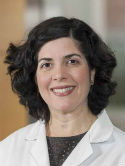| Abstract: |
From 2015 to 2017, 11 confirmed brucellosis cases were reported in New York City, leading to 10 Brucella exposure risk events (Brucella events) in 7 clinical laboratories (CLs). Most patients had traveled to countries where brucellosis is endemic and presented with histories and findings consistent with brucellosis. CLs were not notified that specimens might yield a hazardous organism, as the clinicians did not consider brucellosis until they were notified that bacteremia with Brucella was suspected. In 3 Brucella events, the CLs did not suspect that slow-growing, small Gram-negative bacteria might be harmful. Matrix-assisted laser desorption ionization- time of flight mass spectrometry (MALDI-TOF MS), which has a limited capacity to identify biological threat agents (BTAs), was used during 4 Brucella events, which accounted for 84% of exposures. In 3 of these incidents, initial staining of liquid media showed Gram-positive rods or cocci, including some cocci in chains, suggesting streptococci. Over 200 occupational exposures occurred when the unknown isolates were manipulated and/or tested on open benches, including by procedures that could generate infectious aerosols. During 3 Brucella events, the CLs examined and/or manipulated isolates in a biological safety cabinet (BSC); in each CL, the CL had previously isolated Brucella. Centers for Disease Control and Prevention recommendations to prevent laboratory-acquired brucellosis (LAB) were followed; no seroconversions or LAB cases occurred. Laboratory assessments were conducted after the Brucella events to identify facility-specific risks and mitigations. With increasing MALDI-TOF MS use, CLs are well-advised to adhere strictly to safe work practices, such as handling and manipulating all slow-growing organisms in BSCs and not using MALDI-TOF MS for identification until BTAs have been ruled out. Copyright © 2020 American Society for Microbiology. All Rights Reserved. |





